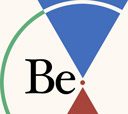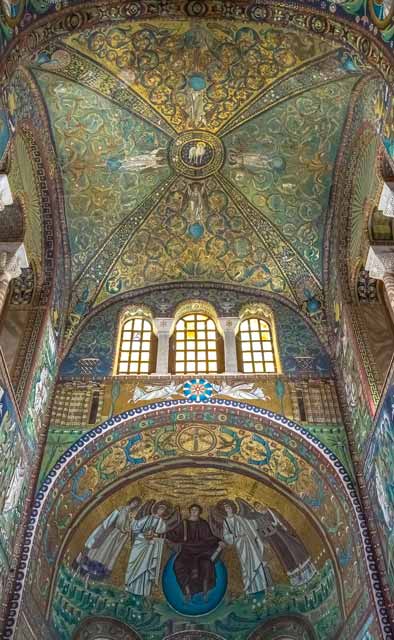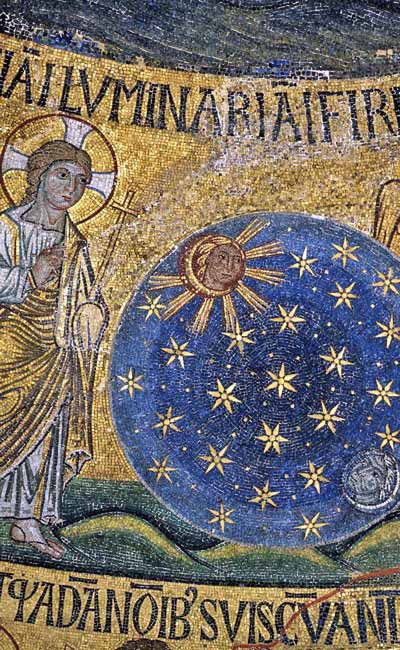BePeriod gathering in
VeniceMay 26 – June 1
We will begin by studying the ancient mosaics of Ravenna, head northward to visit Giotto’s Scrovegni Chapel in Padua, and end in the picturesque canal-city of Venice:
Ravenna
Painting fades away. Sculpture chips and erodes. But mosaics retain their color and form throughout centuries. The 1500-year-old mosaic decorations of the former capital of the Western Roman Empire are in remarkable condition, opening a unique window on the origins of Christianity in Italy.
In these early centuries, Christianity was still in the process of being assimilated as the official religion of the Roman Empire. The influences of the Pagan and Egyptian cultures that preceded it are more apparent. The treatment of the main Christian subjects is more symbolic and less literal than in later Italian works. Consequently, the inner meaning shines through.
We will see Abraham offering his otherworldly visitors a sacrificed calf, Moses taking off his sandals before a fiery Burning Bush, and the Magi tripping their way to Bethlehem guided by the eastern star.
Mosaics of San Vitale | 6th c. C.E.
Esoteric means simply inner—not obvious. What Gurdjieff meant in saying that this Work is Esoteric Christianity is that people easily read the New Testament without seeing what is meant. The Work, once you begin to understand what it is saying, opens your mind to innumerable things said in the New Testament.
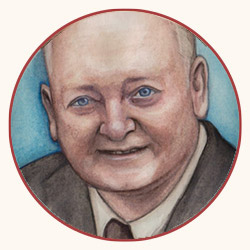
Scrovegni Chapel | 1306 C.E
Padua
Scrovegni Chapel
We will stop overnight in Padua on our way to Venice to pay a visit to the Chapel of the Scrovegni. The wealthy Scrovegni family commissioned this chapel from the prominent Renaissance painter Giotto di Bondone, nicknamed the father of Italian painting. It was to be a complete work; a large hall fully frescoed with the central themes of Christianity.
It is common to see episodes from the life of Jesus and Mary in Christian chapels. It is less common to see their prefiguration in the Old Testament. Early Christian art stressed the intimate relation between the Old and New Testaments. The New was built on the Old and complemented it. Threaded through the main themes of the Scrovegni chapel, we will find hints to their equivalents in the Old Testament.
That the events of the New Testament were foretold many centuries before they happened places them in a symbolic, rather than an historical context, hinting at their inner meaning.

Both the Old and New Testaments agree in all things with each other, in their combination consummating a mystery more single and undivided than soul and body in a human being.
The Philokalia
Venice
St Mark’s Basilica
There are a handful of singular monuments around the world that serve as sources of inspiration for their entire region. They influence all the subsequent structures around them. The Great Pyramid of Giza is one such example, as is the Hagia Sophia in Istanbul and the Pantheon in Rome. Several elements contribute to this special status, from obvious ties to esoteric knowledge, through rich patrons with the political strength to fund their building, to the luck of having survived destruction by war or natural disaster.
St Mark’s Basilica falls into this unique category. It was built in the 11th century C.E by the Doge, the head of state of the Republic of Venice. Venice being a major port, the Basilica was thus positioned at the confluence of traffic between the Eastern and Western poles of the Roman Empire. Much of its contents came from Constantinople, which in turn were amassed from various locations in Central Asia.
San Marco is renowned for its mosaic interiors. These range in date from the 11th – 13th c. C.E. Their layout itself provides a lesson: the entry and vestibule display exclusively scenes from the Old Testament while the interiors display scenes from the New Testament. The entry is therefore a movement from the Old to the New. Here we will encounter the Creation Mosaic often featured in our workshops, along with the Tower of Babel, Abraham’s Hospitality, and Joseph’s adventures in Egypt.
Creation Mosaic | 13th c. C.E.
Ideas can be written down in different forms; they may be written down in such a way that nobody can read them without explanation from those who know or without change of being. Take the Gospels—they are written in different ciphers; one must know the key to decipher them, otherwise it would be just a story, doubtful historically and producing many wrong effects.
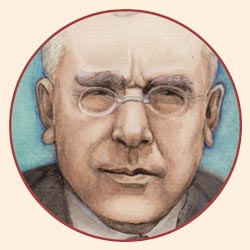
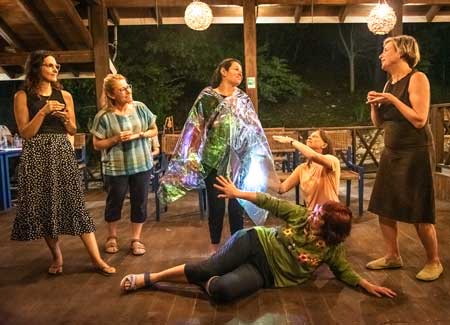
BePeriod Students in Rehearsal | Mexico 2023
Theatrical Performance
The Story of Abraham
All ancient teachings were originally meant to be enacted. This guaranteed the involvement of all centers, not just the intellectual center. We will rewrite the story of Abraham’s obedience to God, the trials he undergoes, and the ultimate reward he earns for his steadfastness. Throughout the week, our evenings and nights will be spent in rehearsal. We will perform our play on the last day of our gathering.

Every real religion… consists of two parts. One part teaches what is to be done. This part becomes common knowledge and in the course of time is distorted and departs from the original. The other part teaches how to do what the first part teaches. This part is preserved in secret in special schools and with its help it is always possible to rectify what has been distorted in the first part or to restore what has been forgotten… This secret part exists in Christianity also as well as in other religions and it teaches how to carry out the precepts of Christ and what they really mean.
BePeriod gathering in
VeniceMay 26 – June 1
